Last Updated on February 26, 2025 by SampleBoard
The Kitschy Kitchen trend isn't a formally defined design style with a single, universally agreed-upon meaning.
Instead, it represents a playful and eclectic approach to kitchen design, embracing a mix of styles and elements that might otherwise seem mismatched.
Think vintage finds, bold colors, unexpected patterns, and a fun and whimsical atmosphere.
Forget about the constraints of minimalist chic; the kitchen is now a canvas for a playful new trend: the kitschy kitchen, also known as "Kitschen".
This isn't about conforming to design norms but celebrates individuality, color, and a joyful disregard for strict design rules.
It's a space where vintage charm meets modern convenience, where bold patterns dance with unexpected textures, and where every detail tells a story.
Embrace the joy of breaking free from design rules and let your creativity run wild.
A single style doesn't define the kitschy kitchen; it's a collection of elements carefully curated to create a fun and unique atmosphere.
It's a melting pot of influences, drawing inspiration from retro diners, grandma's kitchen, and even a dash of pop art.
The common thread? Unapologetic personality.
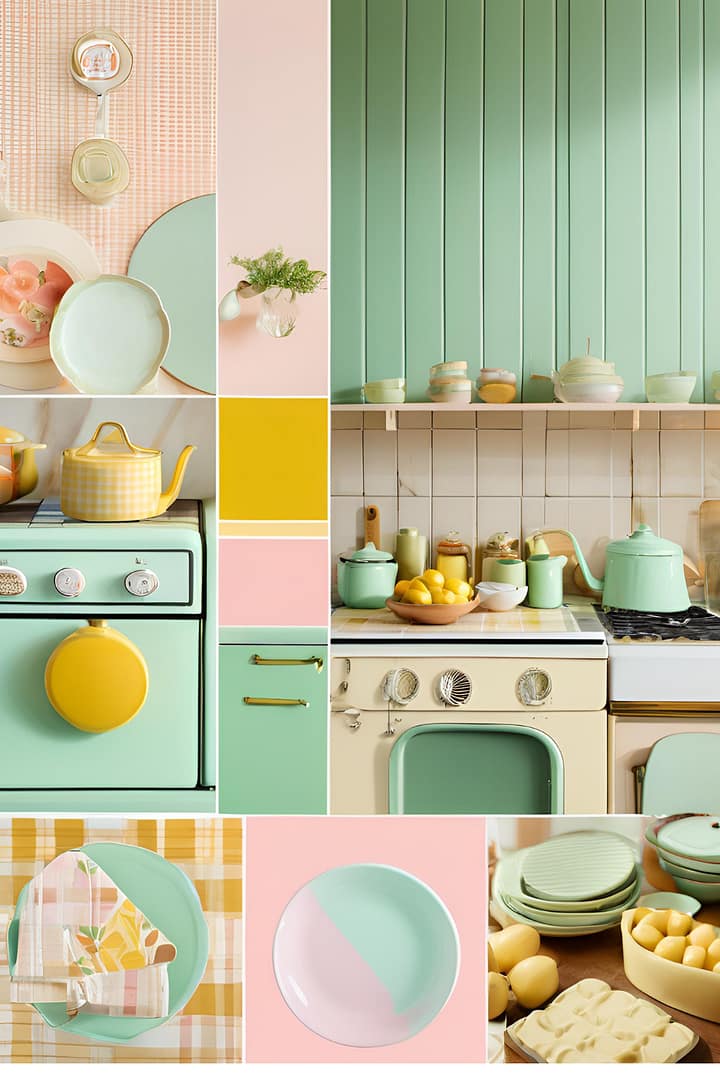
Ditch the neutral palette.
Think bold hues – sunshine yellow, cherry red, turquoise – used on cabinets, walls, or even just as accents.
Don't be afraid to mix and match; clashing patterns can add to the playful vibe. A vibrant backsplash, perhaps in mosaic tile or fun, patterned wallpaper, can be a focal point.
Don't feel limited to painting entire walls. Consider using bold colors strategically: a vibrant island, a colorful backsplash, or even just one feature wall can make a huge impact.
Balance bold colors with more neutral elements to prevent the kitchen from feeling overwhelming. Consider using paint techniques like ombre or color blocking to add visual interest.
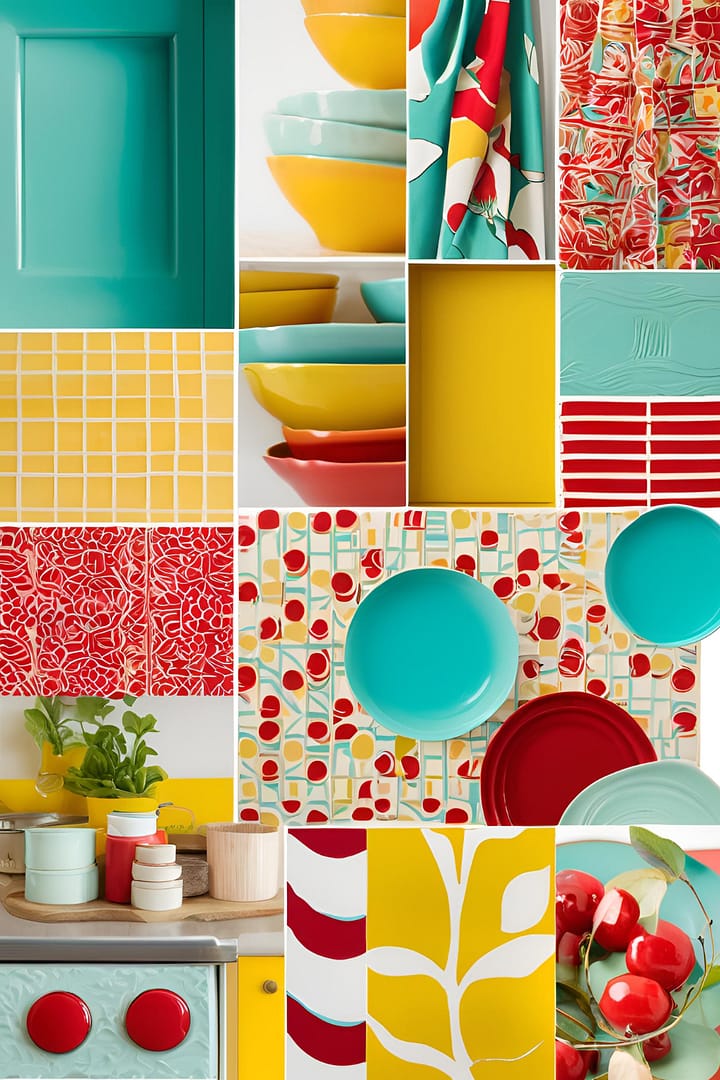
The kitschy kitchen thrives on character. While a pastel-colored refrigerator is iconic, consider other vintage appliance options.
Look for toasters, kettles, stand mixers, or a vintage-style range hood to elevate the retro feel.
If finding genuine vintage pieces is difficult, explore appliances with retro styling – many manufacturers offer modern appliances with a vintage aesthetic.
Flea markets, antique shops, and online marketplaces (Etsy, eBay) are treasure troves for vintage kitchenware.
The thrill of the hunt for enamelware, vintage tins, ceramic canisters, and even old cookbooks adds character and storytelling elements to your shelves and countertops.
Enjoy the excitement of discovering unique pieces and the satisfaction of adding them to your kitchen, making it truly one-of-a-kind.
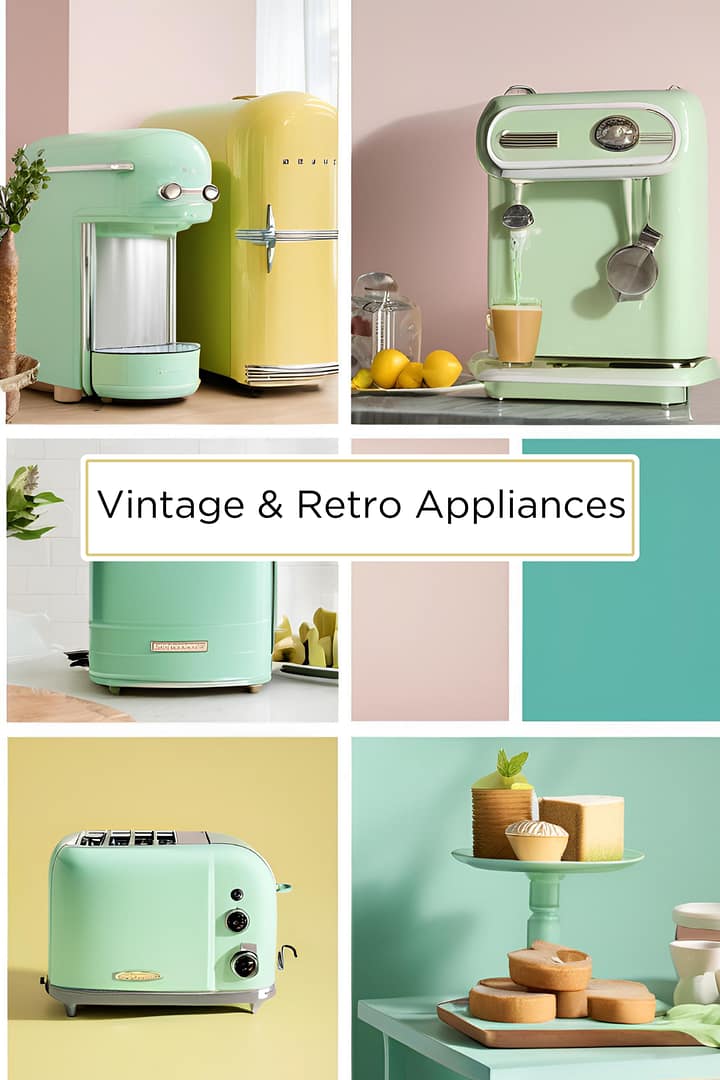
Here are some specific examples of vintage appliances that can add a delightful retro touch:
SMEG and Big Chill offer refrigerators with sleek curves and bright colors reminiscent of the 1950s and 1960s.
Look for toasters with shiny chrome finishes and rounded edges. Companies like Dualit make models that have a classic look and modern functionality.
A vintage stand mixer, such as those from KitchenAid in pastel colors, can be a centerpiece of a retro kitchen with its timeless design.
Companies like Aga offer ranges designed to look like they were made in the mid-20th century but with contemporary performance.
Consider a coffee maker designed with vintage aesthetics, such as those made by Nostalgia Electrics. These makers often feature bold colors and retro shapes.
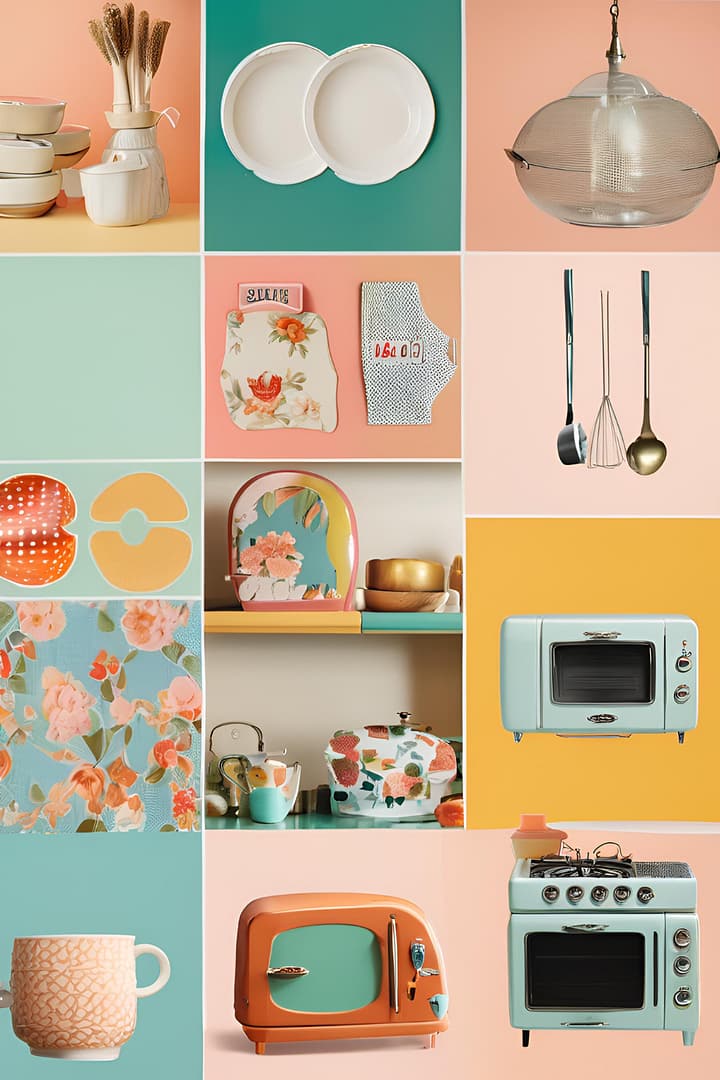
Waring and Oster make blenders with a classic design that refers to the early days of kitchen gadgets. These blenders often have a sturdy metal base and glass blending jars.
These come in retro designs with dials and pastel colors, providing a unique twist to modern microwave ovens.
Hand-crank ice cream makers can add an antique feel or choose one with retro styling for the countertop.
Electric kettles with an old-fashioned look, often featuring enamel finishes and rounded forms, can be functional and decorative.
Incorporating any of these appliances can help create a whimsical blend of past and present in your kitchen.
Open shelving offers a fantastic opportunity to display colorful dishware, cookbooks, and other delightful kitchen treasures.
Group similar items together for a cohesive look, or embrace the eclectic mix – the more variety, the better!
Don't just throw items on the shelves.
Group similar items together by color, size, or material. To organize and add visual interest, use decorative trays or baskets.
Consider incorporating vintage or unique shelf brackets to enhance the overall look.
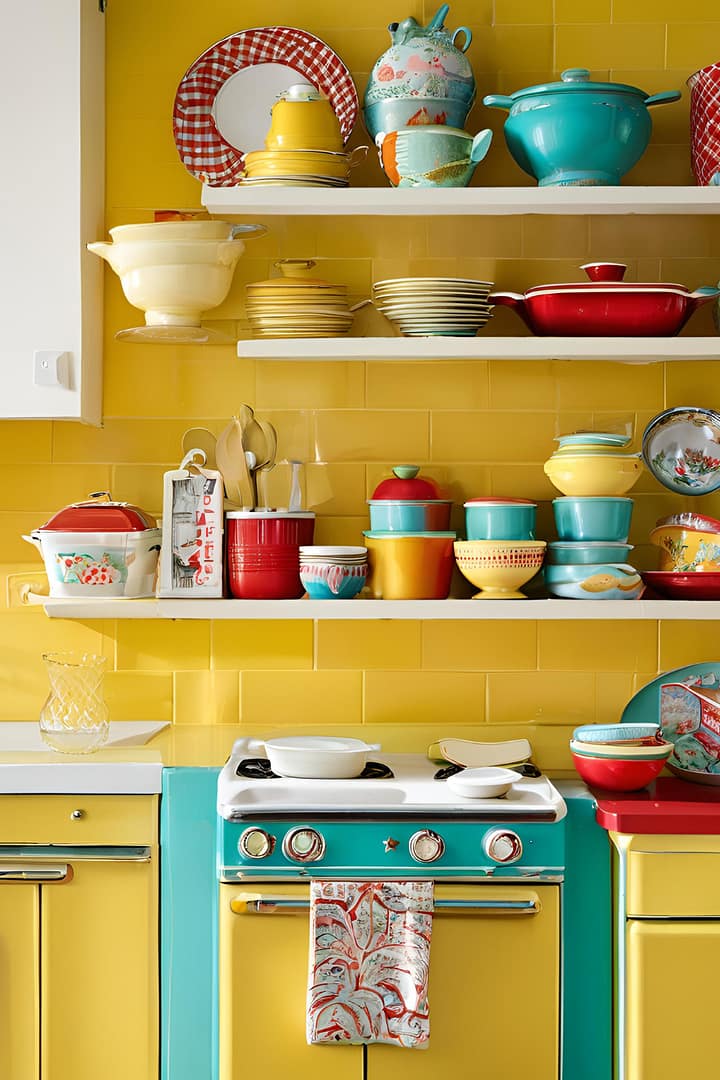
The beauty of the kitschy kitchen lies in its eclecticism.
Pair rustic wooden countertops with sleek, modern appliances. Mix vintage chairs with a contemporary kitchen island.
The key is to blend different styles seamlessly, creating a unique and harmonious whole.
Hunt for vintage appliances (a pastel-colored refrigerator is a statement piece!), retro-inspired canisters, enamelware, and quirky kitchen gadgets at flea markets, antique shops, or online marketplaces.
While embracing a mix of styles is vital, achieving visual harmony is essential.
Choose a common thread – a shared color palette, a similar material (wood, metal), or a consistent era (mid-century modern with vintage accents).
This will prevent the space from looking too cluttered or chaotic.
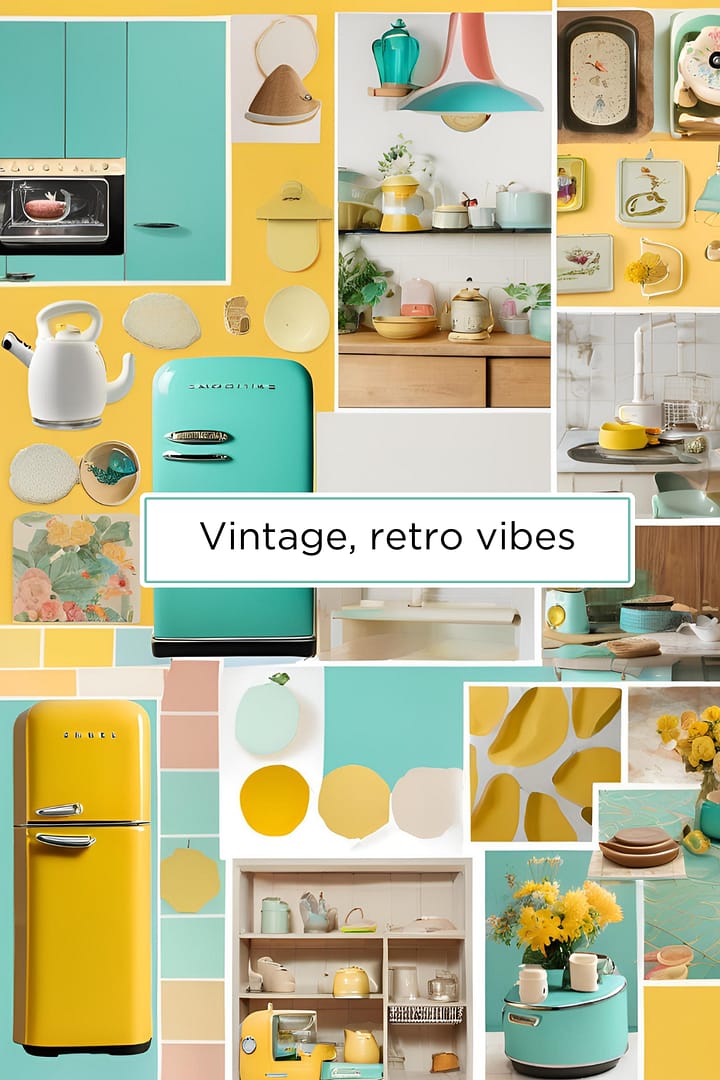
Add quirky touches that reflect your personal style.
Hang whimsical artwork, display your favorite cookbooks, or incorporate fun, patterned textiles. The more personality you inject, the more unique and significant your kitchen will be.
Lighting plays a crucial role in shaping the atmosphere of your kitchen.
Consider a combination of ambient, task, and accent lighting. Vintage-style pendant lights, playful sconces, or a quirky chandelier can add to the kitschy aesthetic.
The proper lighting can transform your kitchen, creating the perfect ambiance for cooking, entertaining, or simply enjoying coffee.
Here are a few combinations that work well together:
The 1950s dinette style in kitchen design evokes a sense of mid-century modern optimism and functionality.
It is often characterized by a combination of streamlined shapes, cheerful colors, and a focus on creating a comfortable and sociable space for casual dining.
It's more than just a table and chairs; it's a complete aesthetic.
Furniture:
The centerpiece is typically a small, round, or square dining table, often with a Formica or laminate top in a bold color or pattern (think checkerboard, floral prints, or solid colors like turquoise, yellow, or pink).
Chairs usually match the table in color and material. They often feature simple, curved shapes and are sometimes upholstered in vinyl or other durable fabrics.
The furniture is generally compact and designed to fit into smaller kitchens efficiently.
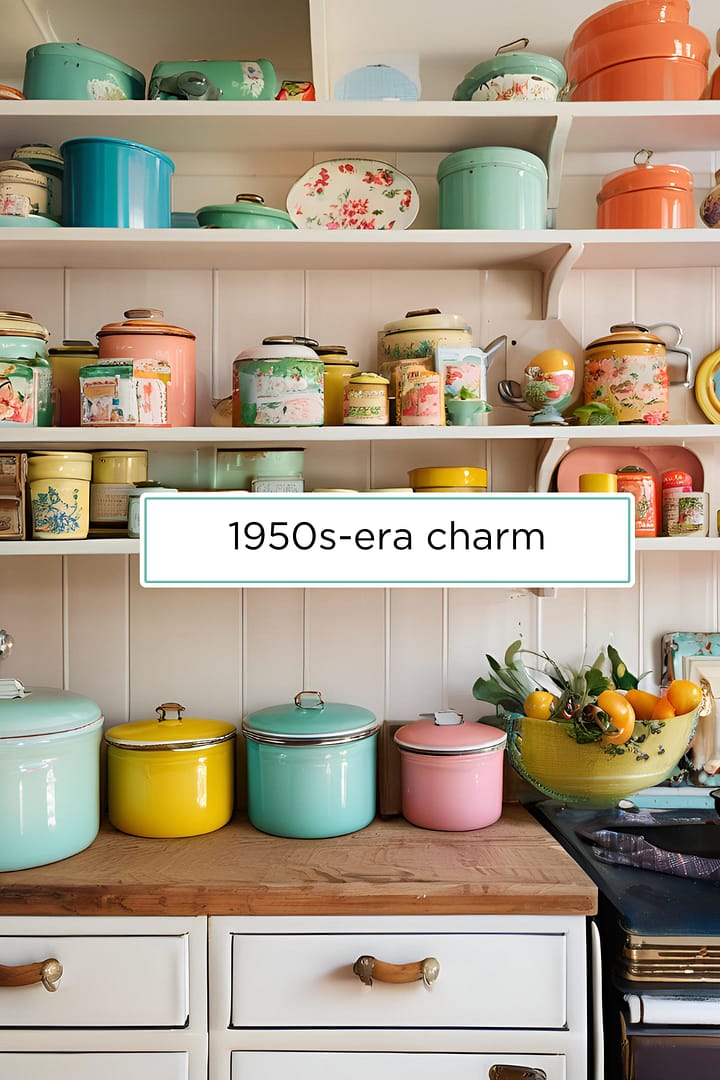
Color Palette:
Colors are vibrant and optimistic, reflecting the post-war boom.
Popular choices include pastel shades (mint green, rose pink, pale yellow), bright primary colors (red, yellow, blue), and combinations.
Black and white accents were also common, contrasting the bolder colors.
Materials:
Formica was a hugely popular material for tabletops due to its durability, ease of cleaning, and wide range of colors and patterns.
Laminates, chrome, and vinyl were also prevalent in furniture and accessories. Wood was used, but often in lighter tones and simpler designs compared to earlier styles.
To recreate a 1950s dinette in your kitchen today, focus on sourcing or replicating those key elements.
Many modern manufacturers produce furniture and accessories inspired by the era's design, making it relatively easy to capture the aesthetic.
The key is to balance authenticity with your personal taste and the functionality of your kitchen.
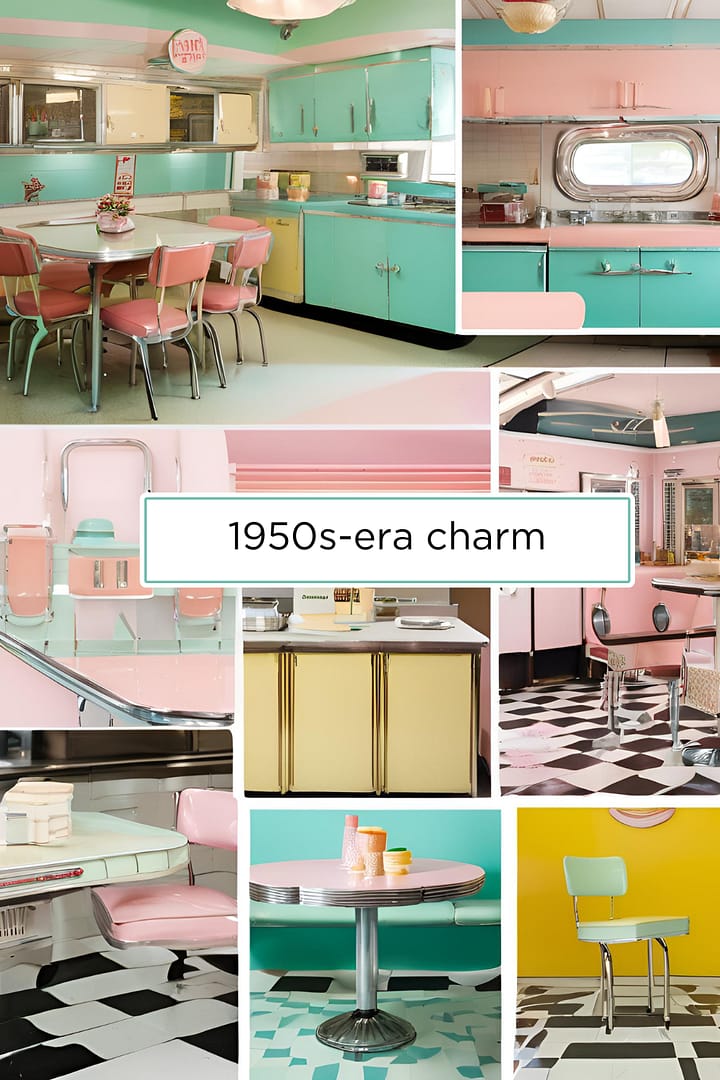
The influence of 1960s pop art in kitchen design is a vibrant and playful departure from previous decades' more restrained styles.
It reflects the Pop Art movement's bold, graphic, and often irreverent spirit, translating its iconic imagery and techniques into kitchen spaces.
Bold Colors and Graphic Patterns:
This is arguably the most defining feature. Think bright, primary colors (red, yellow, blue) used in large blocks or combined in unexpected ways.
Graphic patterns inspired by comic books, advertising, and everyday objects were common, appearing on walls, backsplashes, countertops (if laminate), or even appliances.
Think of Ben-Day dots, bold stripes, and repeating motifs.
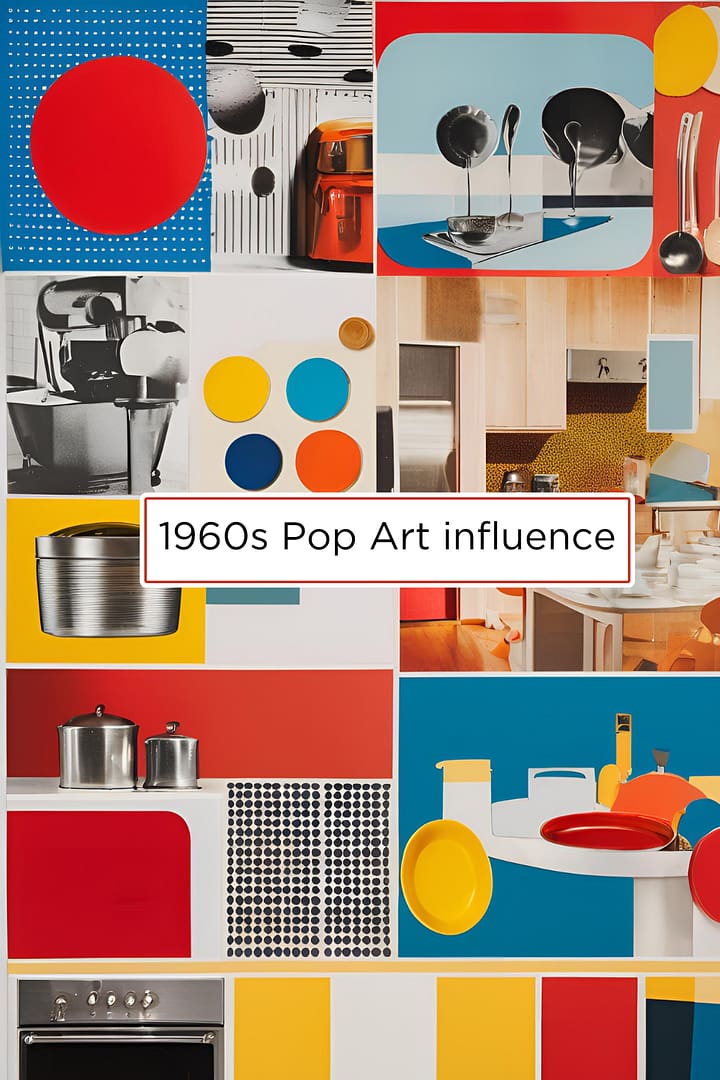
Iconic Imagery:
While not always directly reproducing famous Pop Art pieces, the spirit of the movement was present.
Think of bold, simplified shapes and motifs reminiscent of Andy Warhol's work or Roy Lichtenstein's comic strip-inspired pieces.
These influences might be subtly integrated through patterns or, more overtly, through artwork or decorative elements.
Focus on creating a vibrant, playful, and somewhat irreverent space to achieve a 1960s Pop Art kitchen.
Don't be afraid to use bold color combinations and graphic patterns. Incorporate elements that evoke the spirit of Pop Art, even if they aren't direct reproductions of famous works.
The goal is to capture the energy and enthusiasm of the era and translate it into a fun and functional kitchen space.
Remember, it's about creating a dynamic and unexpected design, not slavishly adhering to a specific formula.
The 1970s eclectic boho influence on kitchen design reflects the era's free-spirited and globally inspired aesthetic.
It's a less structured and more improvisational style than previous decades' more rigidly defined looks. Think of it as a celebration of individuality and a mix-and-match approach to decor.
Here are its defining characteristics:
Global Influences:
The 1970s saw a surge in global travel and cross-cultural exchange. This is reflected in the eclectic boho kitchen, which incorporates elements from various cultures.
You might see woven baskets from Africa, hand-painted tiles from Mexico, or intricately carved wooden bowls from Asia.
The overall feel is one of collected treasures, representing a journey of discovery.
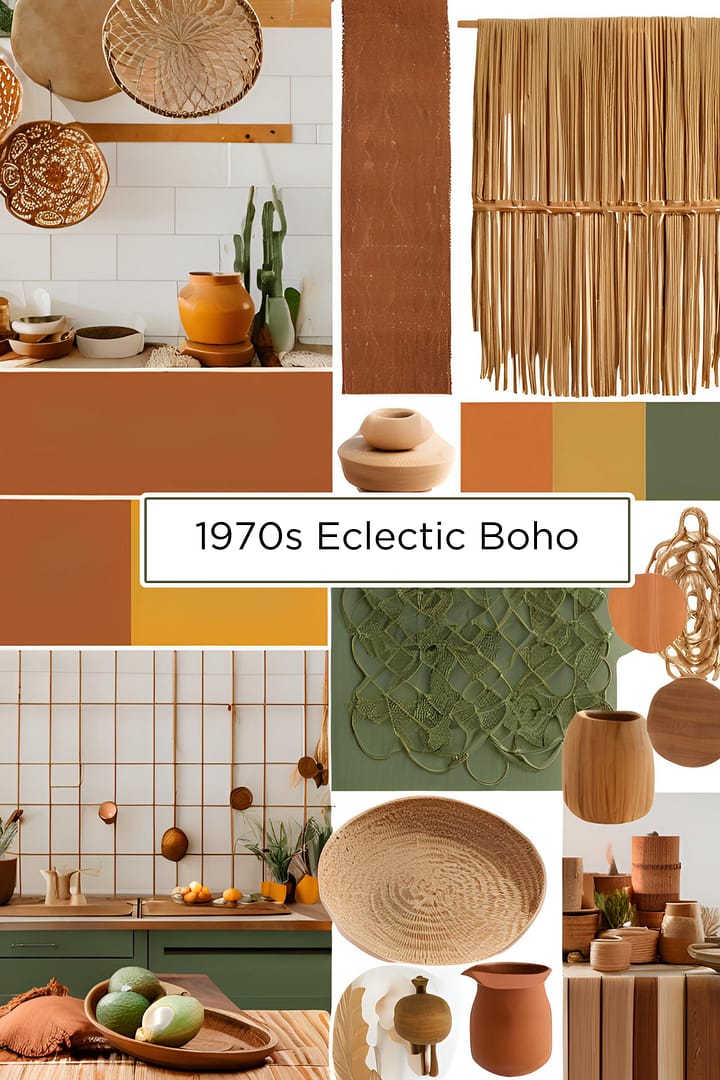
Natural Materials:
A strong emphasis is placed on natural materials.
Think wood (often unfinished or with a rustic finish), wicker, rattan, jute, and stone. These materials contribute to a warm, earthy, and inviting atmosphere.
Earthy Color Palette:
The color palette is generally muted and earthy, with predominating browns, avocado greens, burnt oranges, and creams.
These are often punctuated by bolder, jewel-toned accents like deep blues, greens, or reds. The colors are meant to feel organic and grounded.
Plants and Greenery:
Plants and greenery are integral to the style. Hanging plants, potted herbs, or even a small indoor herb garden add to the space's organic and life-affirming feel.
To achieve a 1970s eclectic boho kitchen, focus on creating a layered and textural space that reflects a love for travel, natural materials, and handcrafted items.
The overall impression should be one of relaxed sophistication, reflecting a blend of cultures and a celebration of individuality.
The kitschy kitchen is more than just a design trend; it's a statement.
It reflects your unique style, love of fun, and appreciation for the unexpected.
So go ahead, embrace the chaos, and create a kitchen that's as vibrant and unforgettable as you are. The overall feeling is one of relaxed informality and personality.
It's less about strict adherence to a specific design rulebook and more about creating a space that reflects the homeowner's unique taste and sense of fun.
It's a trend that allows for significant individual expression.
By thoughtfully considering these expanded elements and concepts, you can create a kitschy kitchen that's visually appealing, deeply personal, and reflective of your individual style and personality.
Embrace the imperfections, celebrate the uniqueness, and have fun with the process!